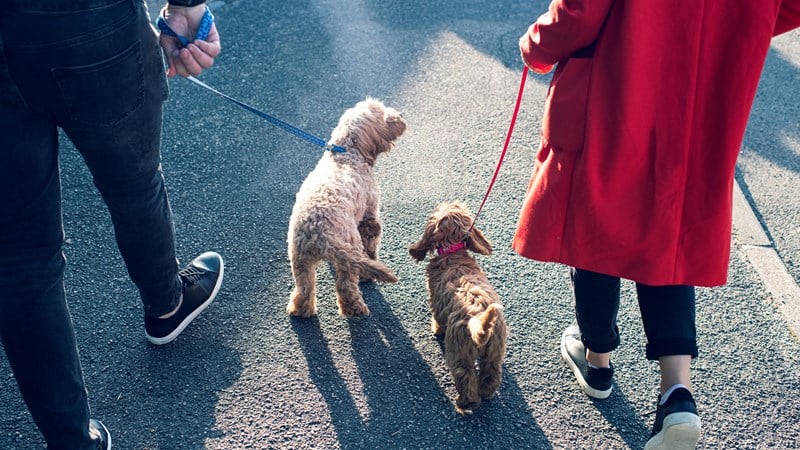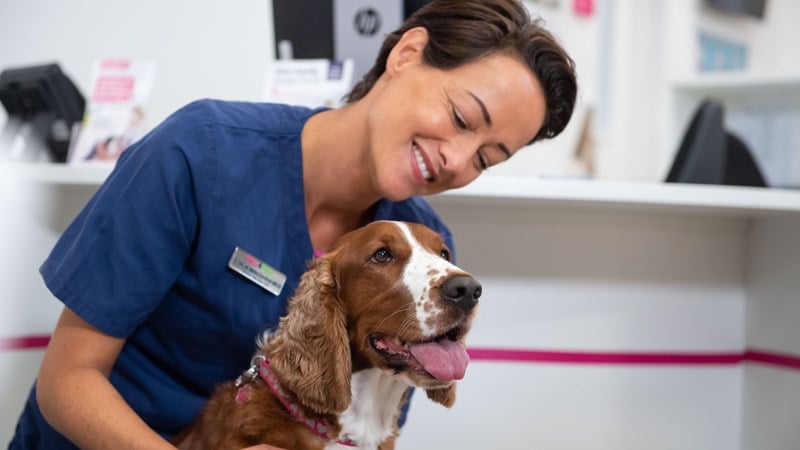
How to crate train a puppy
Crate training is a great way to make sure that your dog has a place of their own, and it can also help with sleep and toilet training too.
Crate training is teaching your dog that they have a safe space all of their own, that they are happy to spend time in. Importantly, this isn’t somewhere to ‘stash’ your dog when you don’t want them out and about.
Although good crate training will give you the option to have your dog comfortable in their crate when it’s appropriate, crate training has to make time in the crate enjoyable and relaxing, so your dog never feels confined or locked away. Think of the crate as being like their ‘den’ – this should be where they go to rest, if they want some alone time, or if they’re anxious.
The main aim of crate training is to help your puppy see the crate as ‘home’. Slow and steady is the best way to help your puppy establish a positive and happy relationship with their crate.
- Start very simply by just having the crate open in a room your puppy is comfortable in. You can sit by the crate to help make it non-threatening, and use treats and toys to entice them to explore around and inside the crate. Don't force them in, just let them get a feel for the crate in their own time.
- Feeding your dog in the crate can be a great second step to getting your dog comfortable in the crate. Once they are happy eating in there, try closing the door just while they finish their meal, opening the door to let them out as soon as they have finished.
- You can also try putting a favourite treat or toy into the crate with the door closed your pup will likely try and get you to open the door to let him in! This builds a positive association with the crate and nice things. Once your puppy is happy in the crate feeding, chewing on a toy or playing, continue closing the door for a very short window only a few minutes maximum.
- Gradually increase the amount of time that your pup is in the crate for. Take this part slowly, if your dog gets upset or whines, you may have gone too fast and need to take a step back. If your dog does whine, make sure they are quiet before you let them out teaching them that whining equals an open door isn't a good habit to start!
- You will also need to start stepping away from the crate as you build up the time, and then leaving the room entirely.
Find your local Vets4Pets practice here.
Crate training tips
- Would you like to go to the bathroom in your bedroom? From three weeks old puppies will start to move away from the mother's nest to toilet. Crate training can help by replacing the nest and taking advantage of this natural instinct.
- Puppy can be somewhere safe if there are energetic games, building works, parties or similar ongoings that might be stressful or cause over-exuberance.
- Crate training is good training practice. Training only works if you are there to reward them for good behaviour, and guide them if they are doing something wrong. Leaving your puppy alone with free reign at home opens the door for unwanted behaviours without the opportunity for you to help correct them.
- You can bring your dog's safe place with you when you travel, which makes the travel itself easier and also helps your puppy to settle in at your destination.
While the bars of a crate can sometimes put people off, crate training is never about using the crate as a cage. Although some crates can look a bit like a ‘prison’, actually they are a safe space and never a punishment, and this means you don’t have to worry or feel like you are caging your dog. Having a safe space is completely natural for a puppy, and actually is very beneficial for them, as well as for you!
For starters, you need a dog crate. A collapsible one is often best, as this makes it more portable for trips.
It’s important that you get a crate that is big enough too – your dog should be able to comfortably stand up, turn around and lie down stretched out. We like a comfy bed, and so do they! It can be difficult when you have a new puppy to know what size to get. Many people try and buy for the estimated adult size of their puppy, which is fine, but be prepared that if your dog gets bigger than you expect you will need to reinvest in a larger one. Starting with a large crate does sometimes end up with puppies creating a ‘sleeping’ end and a ‘soiling’ end too if they are left too long, so if your pup has a lot of growing to do you can start with a smaller one and get a larger one as they grow up.
You will also need a comfortable bed for the crate, and you may like to have toys that your dog only has when they are in their crate, to increase the value of time spent in there.
Dogs are naturally social, so putting their crate in a quiet corner away from everyone can make time in the crate seem like a punishment. The crate should be in a commonly used area, such as a kitchen or lounge, so that your dog doesn’t feel like they are being tucked away.
Being in this busy area can make for lots of distractions though, so a light blanket put over some of the crate can create a more ‘den-like’ feel without your dog feeling neglected. Just make sure the crate isn’t too close to a radiator or in the hot sun, as overheating can lead to heatstroke which can be very dangerous.
If you want to be able to tell your puppy when it’s time to go to bed, you can choose a cue word or phrase to associate with getting into the crate. It’s best to start this early. Pick your cue word or phrase, for example “In your bed”, and say this whenever your pup gets into the crate then give them a treat and praise.
Make sure to put the treat into the crate for them to have, rather than giving it by hand, as this will just encourage them to pop straight back out of the crate again!
Slowly build up the amount of time that your puppy has to sit in the crate before you give the treat and praise, and then start reducing the amount of times your pup receives a treat – always give them praise though!
Soon your pup will associate your phrase or word with getting into their bed, and be comfortable and happy enough in their crate to settle down for a rest once they get in there.
Join our free VIP Puppy club
Join the club for expert advice and tailored offers, including £30 off our Complete Care Health Plans

Health Plans to keep your puppy healthy
At Vets4Pets we offer a range of Health Plans that make essential routine treatments more affordable. You'll save money on things like annual vaccinations, flea and worm treatment and routine health check-ups.

Puppy & Kitten Advice
Giving your pet the best start in life begins with getting the best expert advice.
